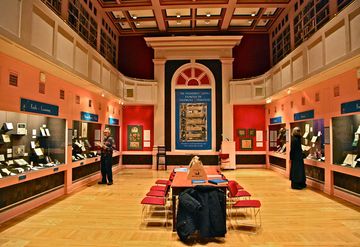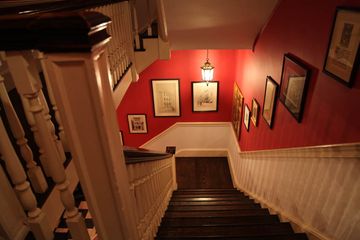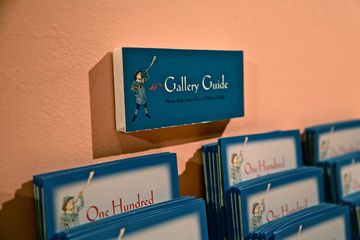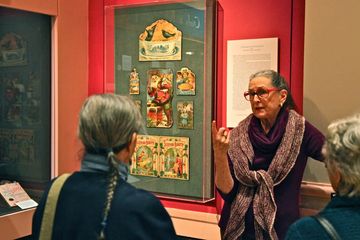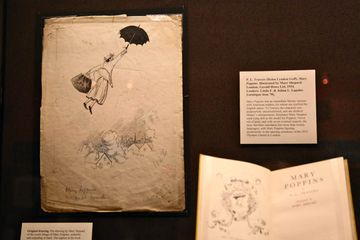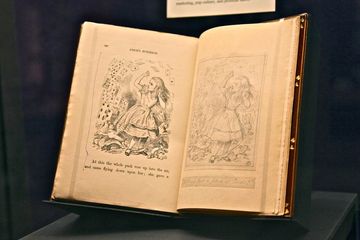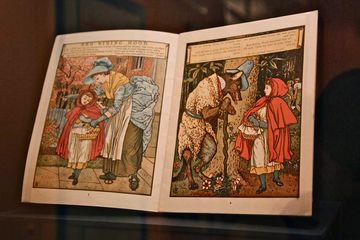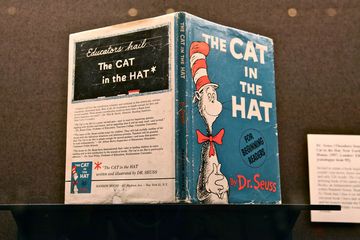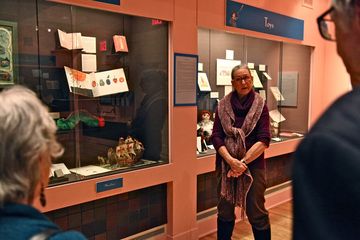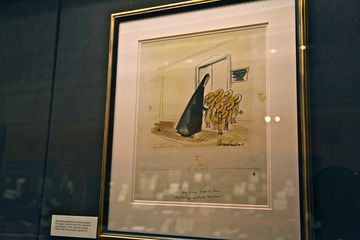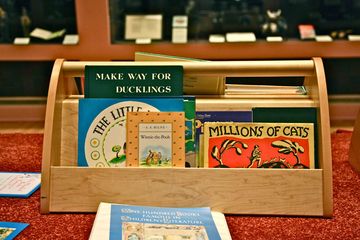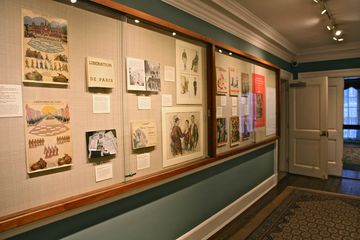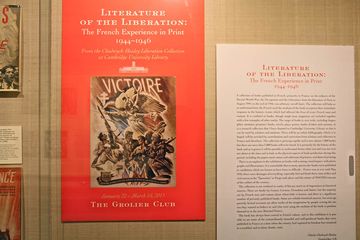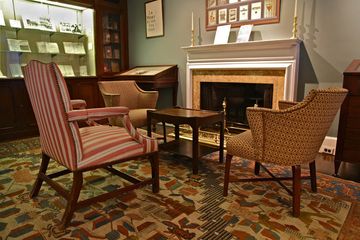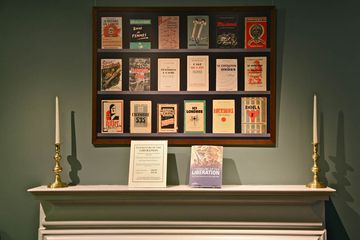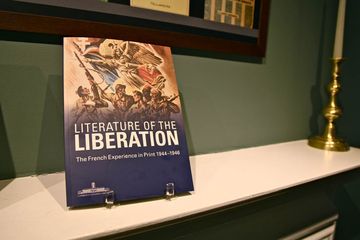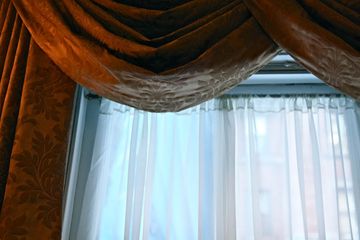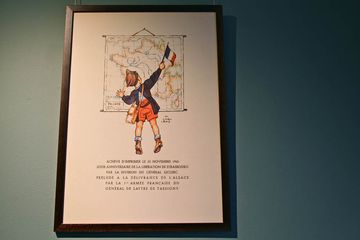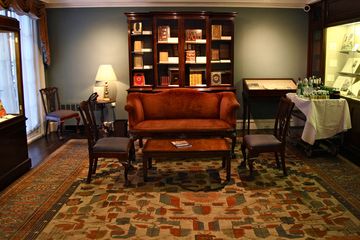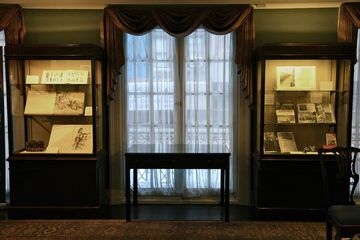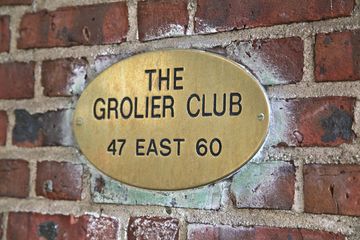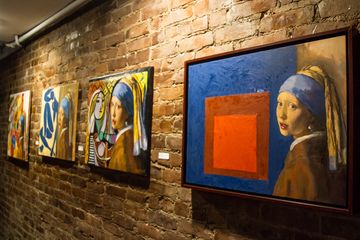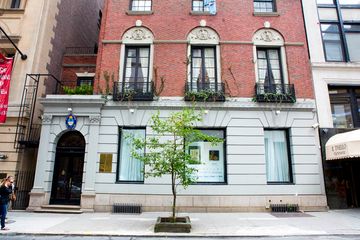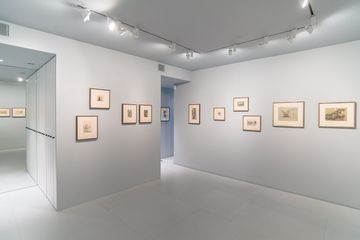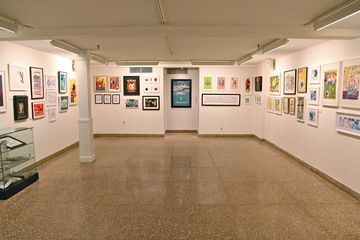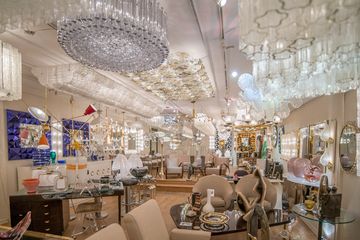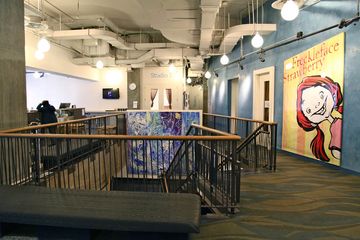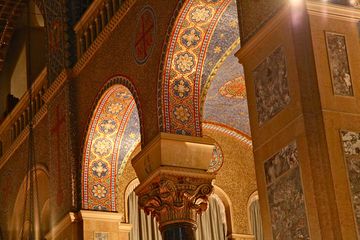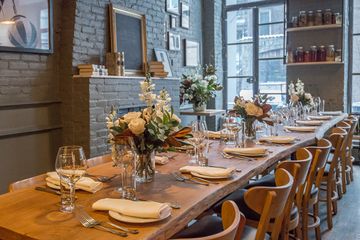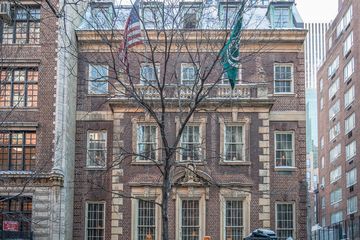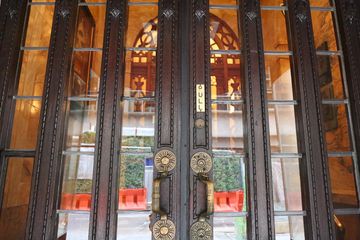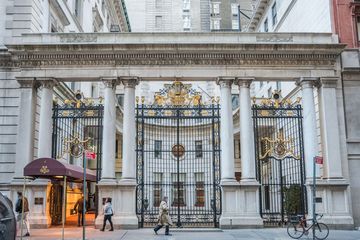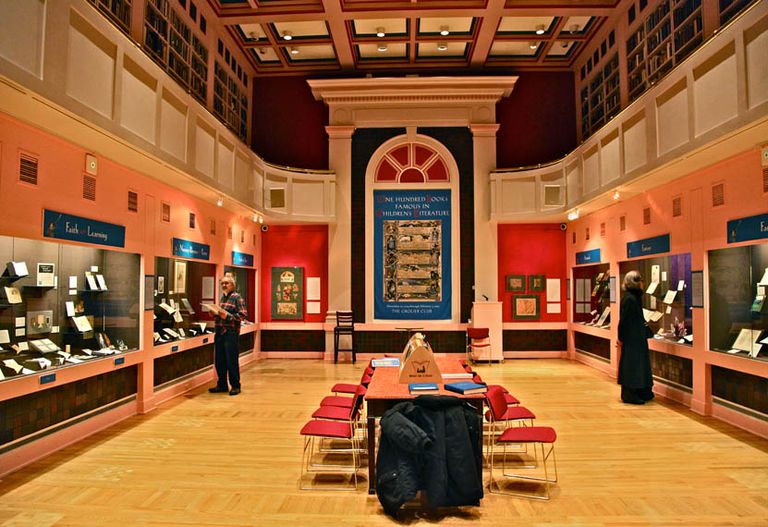
The Grolier Club was established in 1884 by printing press manufacturer Robert Hoe and his eight bibliophile companions. They named their institution after the great Renaissance book collector, Jean Grolier, and adopted the mission to promote "the study, collecting, and appreciation of books and works on paper, their art, history, production, and commerce." To this day, the Grolier Club champions that cause and totals nearly 800 members. Though membership is by nomination only, anyone is permitted to apply for library privileges, visit exhibitions, and attend lectures. The Grolier Club Library holds over 100,000 works centered on the topics of books, authors, printing, typography, publishing, and book collecting. It also boasts 60,000 volumes of "bookseller and book auction catalogues."
As the former owner of a children's bookstore, imagine my enthusiasm when I learned of the show that coincided with my walk across 60th Street. Perusing "One Hundred Books Famous in Children's Literature" was an absolute highlight in the middle of a brisk January day. I found it fascinating to discover which books the curators chose to be their top choices. Amongst the collection of literature, I stared at Lewis Carroll's personal notated copy of Alice's Adventures in Wonderland and an original watercolor illustration from Madeline. I would have loved to have listened to the 45 record that they had displayed behind the glass, as it was Kate Thompson, herself, reading Eloise. Of course, the classics Pat the Bunny, Good Night Moon and the Little Engine That Could were on display, as well as a first edition publication of the modern favorite Harry Potter and the Philosopher's Stone, as it is known in its country of origin.
While speaking with Grolier's head of PR, she assured me that each of the exhibits that pass through the club are of this same fine quality and cover a wide range of subjects from Mao's infamous Red Book to collections of pop-up books. She encouraged me to visit the upstairs exhibit on the WWII French Occupation, Resistance, and Liberation. Naturally, I did.
Ascending the steps lined with portraits of influential persons from the club's past, I found myself in the quaint, second floor gallery that houses a large selection of pieces from club members' private collections. At the end of the hall, in a warm salon with a rust orange velvet sofa and homey fireplace – the perfect reading nook for any bibliophile - I rounded the room to take in the WWII exhibit examining this turbulent period in world history.
While most private clubs on the side streets of Manhattan do not allow non-members past the front door, Grolier's hospitality was completely unexpected and very much appreciated, and there is no doubt that I will return to honor the printed page.
